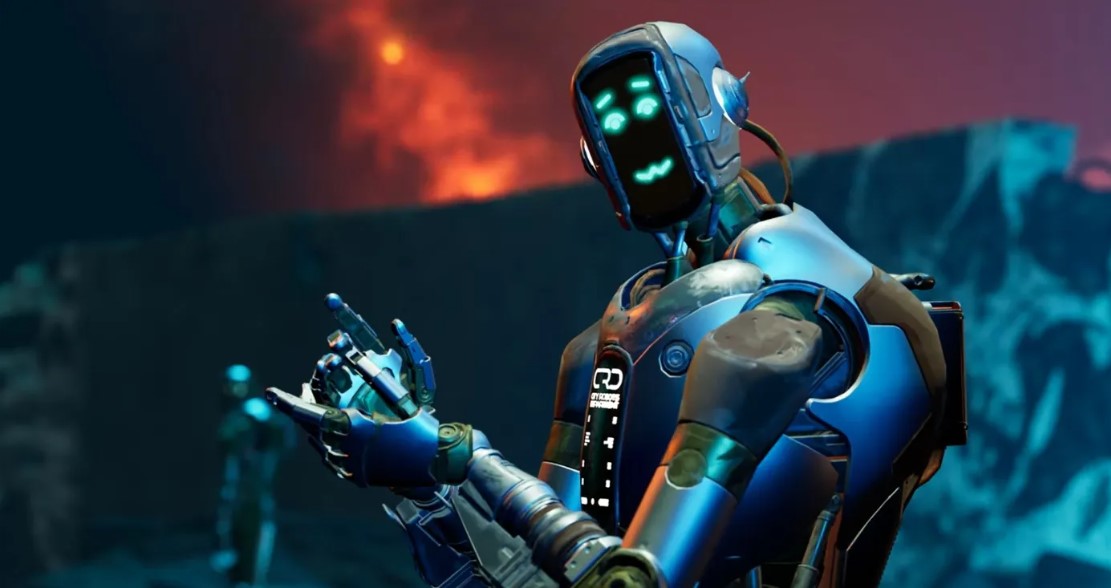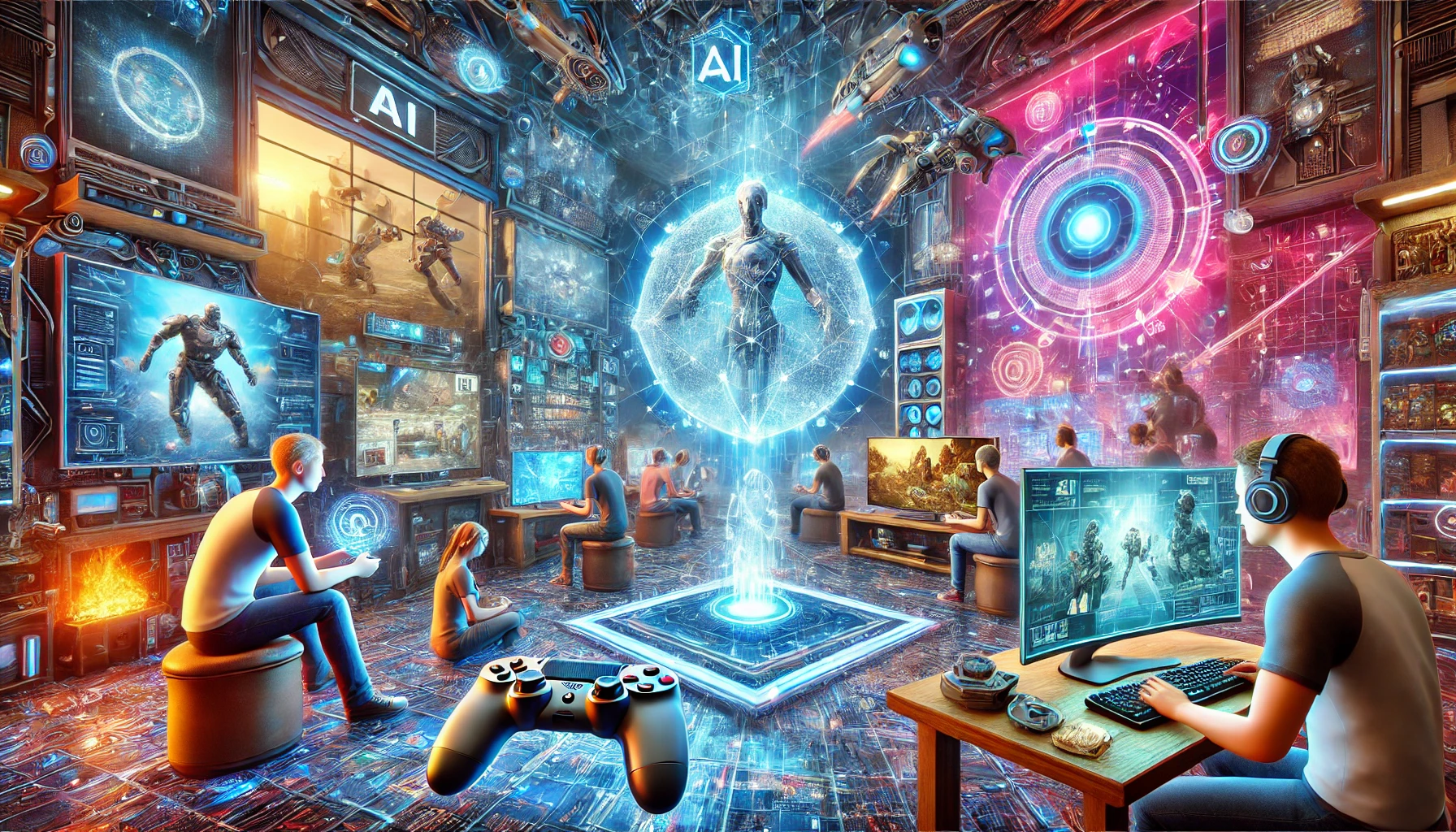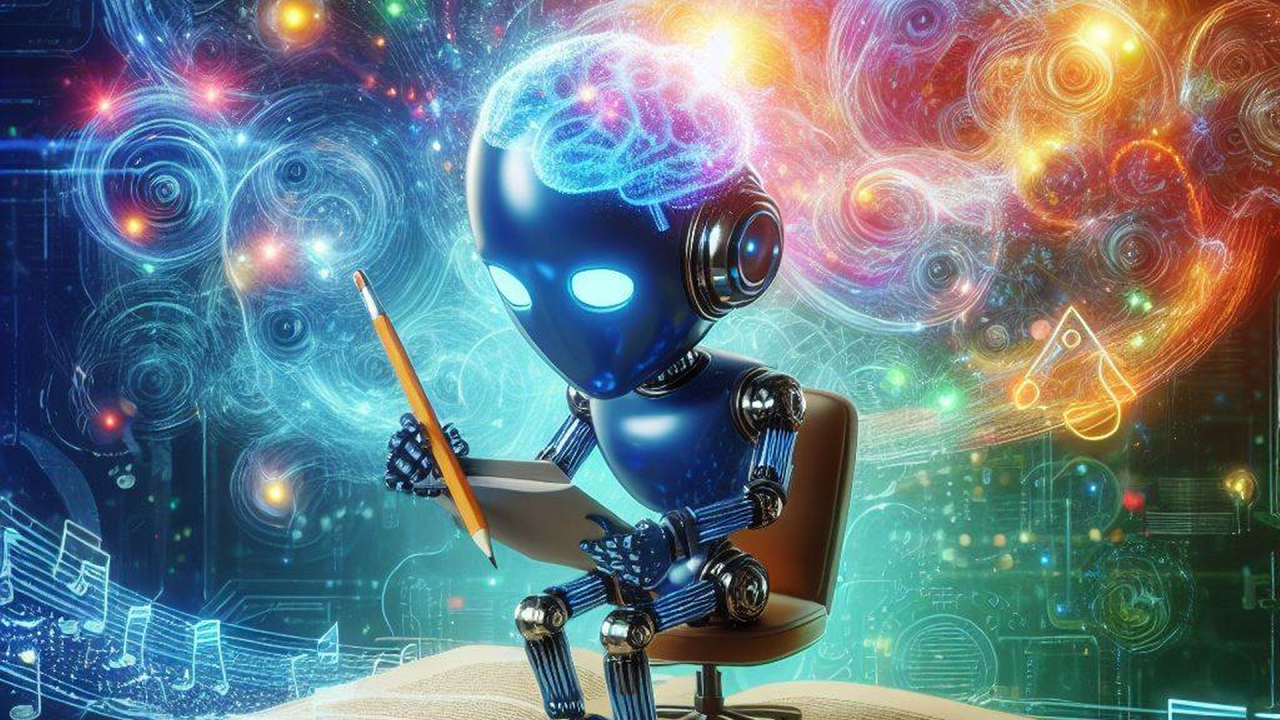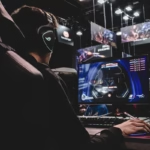Explosive AI-Powered Gaming: Reshaping the Future of Play
Estimated reading time: 7 minutes
Key Takeaways
-
Artificial Intelligence (AI) is dramatically reshaping the gaming landscape, projected to drive the industry to $314 billion by 2026.
-
Key AI technologies like procedural content generation (PCG) and advanced Non-Player Characters (NPCs) create more dynamic, immersive, and endlessly replayable game worlds.
-
AI enhances Virtual Reality (VR) and Metaverse experiences by enabling hyper-realistic environments and interactions with intelligent virtual beings.
-
Cloud gaming relies heavily on AI for optimizing streaming quality, reducing latency, and making high-end gaming accessible across various devices.
-
While AI offers immense potential, it also introduces ethical challenges concerning data privacy, algorithmic bias, and the balance between automation and human creativity in game development.
Table of Contents
- Explosive AI-Powered Gaming: Reshaping the Future of Play
- Key Takeaways
- Introduction: The AI Gaming Revolution
- Understanding AI’s Role in Modern Gaming
- Procedural Content Generation
- AI-Powered NPCs: Beyond Scripts
- The Rise of Explosive AI-Powered Gaming
- Key Drivers
- Real-World Innovations
- AI Meets Immersive Technologies: VR Gaming Trends
- Hyper-Realistic Environments
- Behavioral NPCs
- Cloud Gaming Services: AI’s Backbone for Accessibility
- How AI Optimizes Cloud Play
- Case Study: Xbox Cloud Gaming
- AI-Powered NPCs: From Scripted to Sentient
- Early vs. Modern NPCs
- Breakthroughs in Interaction
- The Metaverse Gaming Revolution: AI as the Architect
- AI’s Role in Building the Metaverse
- Example: Decentraland
- Challenges and Ethical Considerations
- Data Privacy Concerns
- Bias in AI Systems
- Balancing Automation and Creativity
- Future Outlook: Where AI Takes Gaming Next
- Predictions
- The Player-AI Partnership
- Conclusion: Embrace the Revolution
- Frequently Asked Questions
- How exactly does AI make NPCs smarter?
- Is AI taking away jobs from game developers?
- What’s the difference between AI in gaming and AI in general?
- Are AI-generated games the future?
Introduction: The AI Gaming Revolution
The world of interactive entertainment is on the cusp of a profound transformation. Fueling this change is explosive AI-powered gaming, a force poised to redefine not just how games are made, but the very essence of play itself. Forget static worlds and predictable enemies; AI is injecting dynamism, intelligence, and unprecedented levels of personalization into our digital experiences. Industry analysts predict a monumental surge, with AI potentially catapulting the sector to an astonishing $314 billion valuation by 2026. This isn’t merely an incremental update; it’s a paradigm shift. This blog post delves into the core technologies driving this revolution, exploring everything from NPCs that learn and adapt to sprawling, AI-managed metaverses accessible instantly via the cloud. We’ll examine how AI is crafting gaming experiences that feel less programmed and more alive.

Understanding AI’s Role in Modern Gaming
At its heart, AI in gaming involves using algorithms and computational techniques to create systems that can perceive their environment, make decisions, and learn over time, resulting in more dynamic and player-responsive gameplay. This marks a significant departure from traditional game design, which often relied on heavily scripted sequences and predictable patterns. Modern AI allows games to adapt on the fly, reacting intelligently to player actions and choices. Let’s explore two key areas where AI is making a huge impact:
Procedural Content Generation (PCG)
-
AI algorithms can automatically generate vast amounts of game content, such as levels, landscapes, quests, and items. Think of games like *Minecraft* or *No Man’s Sky*, where AI creates virtually infinite, unique worlds for players to explore.
-
This approach dramatically reduces development time and costs associated with manually creating massive game worlds. More importantly, it offers players near-limitless exploration and replayability, as each playthrough can offer novel environments and challenges (source: Datapragmatist).
-
PCG isn’t just about randomness; sophisticated AI ensures generated content adheres to specific design rules, maintaining coherence and playability while still providing variety.

AI-Powered NPCs: Beyond Scripts
-
Non-Player Characters (NPCs) have evolved significantly thanks to AI. Early examples, like the ghosts in *Pac-Man*, followed simple, predetermined paths.
-
Modern AI-powered NPCs are far more sophisticated. They can exhibit complex behaviors, learn from player interactions, and adapt their strategies in real time. In narrative-driven games like *Cyberpunk 2077* or *The Last of Us Part II*, NPCs react convincingly to player decisions, environmental changes, and combat situations, making the game world feel more dynamic and consequences more meaningful.
-
This learning capability can manifest in various ways, from enemies coordinating attacks based on player tactics to allies offering context-aware assistance, deepening immersion and strategic depth.
The Rise of Explosive AI-Powered Gaming
What factors are driving this rapid acceleration and adoption of AI within the gaming industry? Several converging forces are at play:

Key Drivers
-
Computational Power: The sheer processing power of modern hardware, particularly Graphics Processing Units (GPUs), is crucial. Advanced GPUs are essential for training and running the complex AI models required for realistic physics, intelligent NPCs, and dynamic environments. High-performance GPUs, like those in the NVIDIA GeForce RTX 40 Series, are specifically designed with AI acceleration capabilities (Tensor Cores), pushing the boundaries of what’s possible in real-time rendering and AI processing.
-
Machine Learning (ML) Advancements: Breakthroughs in machine learning algorithms, particularly deep learning, enable AI systems to learn complex patterns from vast amounts of player data. This allows developers to create highly personalized experiences, dynamically adjust difficulty, and even generate content tailored to individual playstyles. For instance, games like *The Elder Scrolls Online* utilize ML techniques to generate diverse quests and challenges based on how a person plays (source: NowPayments).
-
Data Availability: Online connectivity allows games to collect enormous amounts of anonymized player interaction data. This data is invaluable for training AI models to understand player behavior, preferences, and skill levels, leading to more adaptive and engaging game designs.
Real-World Innovations
-
Open-world games like *Grand Theft Auto V* leverage AI extensively to simulate bustling cities with lifelike traffic patterns, pedestrian behaviors, and emergent events, creating a believable and dynamic sandbox environment.
-
Many modern games employ AI for dynamic difficulty adjustment. The AI monitors player performance and subtly tweaks challenges (e.g., enemy accuracy, resource availability) to maintain engagement, preventing frustration for struggling players and boredom for skilled ones (source: SGAnalytics).
-
AI is also used behind the scenes for tasks like automated testing, bug detection, and player behavior analysis, streamlining the development process.

AI Meets Immersive Technologies: VR Gaming Trends
The synergy between AI and immersive technologies like Virtual Reality (VR) is creating unprecedented levels of realism and interaction. VR gaming trends show a clear trajectory towards experiences supercharged by AI, transforming virtual worlds from static sets into truly interactive environments.

Hyper-Realistic Environments
-
AI powers advanced physics simulations and environmental interactions in VR. In titles like *Half-Life: Alyx*, objects react realistically to player touch and manipulation – bottles shatter convincingly, liquids slosh, and items roll off tables dynamically. This level of physical fidelity, often managed by AI-driven physics engines, significantly enhances the sense of presence (source: Meshy.ai).
-
AI can also procedurally generate highly detailed VR environments, making large-scale virtual worlds feasible without astronomical manual effort.
Behavioral NPCs
-
Imagine VR characters that not only look real but act real. AI-driven motion capture and animation systems allow VR avatars, like those being developed for Meta’s platforms (powered by hardware like the Meta Quest 3), to mimic nuanced facial expressions and body language, making social interactions in VR feel far more natural.
-
Perhaps most excitingly, NPCs in VR are increasingly incorporating Natural Language Processing (NLP). This allows players to have genuinely spontaneous conversations with virtual characters, moving beyond predefined dialogue trees. NPCs can understand spoken commands, respond contextually, and even express “emotions,” creating vastly more believable and engaging interactions (source: Autodesk).
Cloud Gaming Services: AI’s Backbone for Accessibility
Cloud gaming services, such as NVIDIA GeForce NOW, Xbox Cloud Gaming, and PlayStation Plus Premium, represent a major shift in how games are accessed. By streaming games directly from powerful data centers to users’ devices, they eliminate the need for expensive local hardware. AI plays a critical, often unseen, role in making this seamless experience possible.

How AI Optimizes Cloud Play
-
Predictive Streaming and Latency Reduction: Lag is the enemy of cloud gaming. AI algorithms analyze network conditions, player input patterns, and game state to predict upcoming actions. By anticipating what the player might do next, the system can pre-render frames or pre-load data, significantly reducing perceived latency and delivering a smoother, more responsive feel (source: AppInventiv).
-
Adaptive Bitrate Streaming: AI constantly monitors the user’s internet connection quality and adjusts the video stream’s bitrate and resolution in real-time. This ensures the best possible visual quality without causing buffering or stuttering, even on fluctuating network speeds.
-
Cross-Device Optimization: AI helps optimize game streams for a vast array of devices, from high-resolution TVs and PCs to smartphones and tablets. It ensures controls are mapped appropriately and the visual output is tailored to the specific screen size and capabilities, allowing AAA titles to be played effectively anywhere.
Case Study: Xbox Cloud Gaming
-
Microsoft heavily utilizes AI within its Azure data centers to manage its Xbox Cloud Gaming infrastructure. AI dynamically allocates server resources based on real-time demand, scaling capacity up during peak gaming hours and down during quieter periods to optimize efficiency and cost (source: Evacodes).
-
This intelligent resource management ensures consistent performance for millions of users accessing a diverse library of games, underpinning Microsoft’s vision for broad, cross-platform game accessibility through services like Game Pass Ultimate.
AI-Powered NPCs: From Scripted to Sentient
The journey of AI-powered NPCs is one of the most compelling narratives in modern game development. We’re moving away from characters who felt like robotic quest-givers towards virtual beings capable of complex, emergent behavior that genuinely enhances game narratives and player immersion.

Early vs. Modern NPCs
-
Think back to older RPGs like *Skyrim*. While revolutionary for their time, many NPCs followed relatively simple daily routines and repeated generic lines of dialogue. Their behavior was largely scripted.
-
Contrast this with characters in games like *The Witcher 3* or *Red Dead Redemption 2*. These NPCs exhibit greater emotional depth, react dynamically to the player’s reputation and past actions, remember choices, and engage in more believable interactions within the game world. AI enables them to deviate from simple scripts and respond more organically (source: Splore).
Breakthroughs in Interaction
-
Natural Language Processing (NLP) is a game-changer. Integrating sophisticated language models allows players to potentially converse freely with NPCs using typed or spoken language, moving beyond predetermined dialogue options. Imagine asking an NPC for directions, discussing recent events, or even attempting persuasion using natural conversation. This is already being experimented with in Metaverse gaming platforms via intelligent chatbots and agents.
-
In combat scenarios, AI-driven NPCs can now analyze the battlefield, coordinate tactics with other NPCs, exploit player weaknesses, and adapt their strategies mid-fight. This forces players to think tactically rather than relying on predictable enemy patterns (source: AppInventiv).
-
AI also allows for NPCs with persistent “memories” and evolving relationships with the player, making long-term interactions feel more meaningful and impactful.
The Metaverse Gaming Revolution: AI as the Architect
The concept of the Metaverse – persistent, interconnected virtual worlds where users can socialize, work, and play – relies heavily on AI for its construction and operation. Metaverse gaming aims to merge virtual spaces into seamless, large-scale universes, and AI acts as the underlying intelligence making this possible.

AI’s Role in Building the Metaverse
-
Content Moderation and Safety: In vast, user-generated virtual worlds like Roblox or VRChat, AI is essential for automatically detecting and filtering toxic behavior, harassment, and inappropriate content, creating safer and more welcoming environments at scale.
-
Intelligent Avatars and Agents: AI powers sophisticated avatars that can mimic user expressions and movements, as well as autonomous AI agents (advanced NPCs) that populate the world, run shops, offer guidance, or provide companionship.
-
Dynamic World Management: AI can manage complex systems within the metaverse, such as virtual economies (adjusting item prices based on supply and demand), orchestrating large-scale events, or personalizing environments based on user preferences (source: Evacodes).
-
Procedural Generation: Just as in traditional games, AI can procedurally generate terrains, buildings, and assets to build out expansive metaverse environments efficiently.
Example: Decentraland
-
Platforms like Decentraland, a blockchain-based virtual world, utilize AI in various ways. AI-driven avatars can learn about user interests and preferences over time, proactively suggesting relevant activities, locations to visit, or other users to connect with, fostering social interaction and discovery within the virtual space (source: SGAnalytics).
-
AI can also contribute to the governance and economic balancing of such platforms, analyzing transaction data and user behavior to inform platform evolution.
Challenges and Ethical Considerations
Despite the immense potential of AI in gaming, its rapid advancement is not without significant challenges and ethical considerations that developers and the industry must address responsibly.

Data Privacy Concerns
-
AI systems, particularly those focused on personalization and adaptive difficulty, often rely on collecting vast amounts of player data – including play patterns, preferences, reaction times, and even biometric data in VR. This raises serious privacy concerns about how this data is stored, used, and protected (source: Google Cloud).
-
Transparency regarding data collection practices and robust security measures are paramount to maintaining player trust.
Bias in AI Systems
-
AI models are trained on data, and if that data reflects existing societal biases, the AI can perpetuate or even amplify them. For example, early facial recognition AI in games sometimes struggled to accurately represent diverse skin tones or features. AI-driven NPCs could inadvertently adopt stereotypical behaviors if not carefully designed and audited (source: AppInventiv).
-
Developers have a responsibility to proactively audit their training data and algorithms to mitigate bias and ensure fair and equitable representation within games.
Balancing Automation and Creativity
-
While AI tools like procedural generation can accelerate development, over-reliance on purely AI-generated content risks creating games that feel generic or lack the unique artistic vision and handcrafted feel that players often cherish (source: Evacodes).
-
The most successful approach often involves a synergy between human creativity and AI tools. AI can handle laborious tasks or generate base structures, which human designers then refine, curate, and imbue with artistic intent. The critical acclaim of *Baldur’s Gate 3*, a game rich in handcrafted narrative and systems, exemplifies the power of human-led design, even in an era of increasing AI capability.
Future Outlook: Where AI Takes Gaming Next
The trajectory of explosive AI-powered gaming suggests we are only scratching the surface of its potential. The coming years promise even more profound integration of AI into every facet of gaming.

Predictions
-
Fully AI-Generated Games: While still experimental, tools like *AI Dungeon* hint at a future where entire game worlds, narratives, and gameplay systems could be generated by AI based on simple prompts or player preferences. This could lead to radically new forms of interactive storytelling (source: Meshy.ai).
-
Hyper-Personalization: AI will enable games that adapt not just difficulty, but narratives, characters, and even art styles to individual players in real time, creating truly unique and deeply personal experiences.
-
Emergence of Ethical Frameworks: As AI becomes more powerful and pervasive, the industry will likely develop clearer ethical guidelines and standards for transparent AI development, data usage, and bias mitigation to protect users and ensure responsible innovation (source: Google Cloud).
-
AI as a Creative Partner: Development tools will increasingly incorporate AI not just for automation, but as a collaborative partner, assisting designers with brainstorming, prototyping, balancing, and iterating on ideas.
The Player-AI Partnership
-
Future games may foster a unique partnership between the player and AI systems. Imagine AI companions that learn and evolve alongside the player, AI game masters that dynamically craft adventures based on player actions, or AI opponents that provide perpetually challenging and novel strategic encounters.
-
This blend of human agency and AI adaptability promises hyper-personalized narratives and gameplay loops that constantly surprise and engage. Exploring broader AI innovations, like those outlined in 10 Cutting-Edge AI Technologies, gives a glimpse into the foundational advancements enabling these future gaming experiences.
Conclusion: Embrace the Revolution
The integration of Artificial Intelligence is undeniably reshaping the gaming industry at an unprecedented pace. From smarter NPCs that learn and react, to procedurally generated worlds offering endless exploration, and cloud services making high-fidelity gaming universally accessible, AI is enhancing immersion, personalization, and creativity. While challenges related to ethics, privacy, and maintaining the human touch exist, the potential benefits are immense. As AI continues its relentless evolution, so too will the ways we play, interact with, and experience digital worlds. The era of explosive AI-powered gaming isn’t a distant future; it’s unfolding right now. It’s time to dive in and experience the revolution firsthand.
Frequently Asked Questions
How exactly does AI make NPCs smarter?
AI makes NPCs smarter in several ways. Firstly, through advanced pathfinding algorithms (like A*), NPCs navigate complex environments more realistically. Secondly, using techniques like Behavior Trees or Finite State Machines combined with machine learning, NPCs can make more complex decisions based on the game state, player actions, and their own internal “goals” or “moods.” They can learn player tactics and adapt their strategies, coordinate with other NPCs, and react more dynamically to environmental changes. Furthermore, Natural Language Processing (NLP) allows NPCs to understand and respond to player speech or text input, enabling more natural conversations beyond pre-written dialogue trees.
Is AI taking away jobs from game developers?
While AI can automate certain tasks previously done manually (like some aspects of asset creation, level generation, or QA testing), it’s more likely to change the nature of game development jobs rather than eliminate them entirely. AI can act as a powerful tool, augmenting human creativity and allowing developers to focus on higher-level design, narrative, and artistic refinement. New roles focused on training AI models, managing AI systems, and integrating AI tools effectively are emerging. The focus may shift from repetitive manual tasks to overseeing and directing AI, ensuring the final product aligns with the creative vision. However, like any technological shift, there will be adjustments in the workforce.
What’s the difference between AI in gaming and AI in general?
General AI research encompasses a vast field, including areas like computer vision, robotics, natural language understanding, and complex problem-solving aimed at creating broad intelligence. AI in gaming typically applies specific subsets of these techniques tailored for entertainment purposes. The focus is often on creating *believable* intelligence rather than true consciousness. Game AI needs to operate within the specific rules and constraints of the game world, run efficiently in real-time on consumer hardware, and prioritize creating an engaging player experience (e.g., NPCs that are challenging but not unfairly so). While it borrows heavily from general AI research, game AI has unique goals and implementation constraints.
Are AI-generated games the future?
Fully AI-generated games are a fascinating prospect, particularly for creating highly dynamic and personalized experiences or enabling rapid prototyping. Tools exist that demonstrate this capability on a smaller scale. However, it’s unlikely they will completely replace human-designed games in the near future. The nuance, artistic vision, curated storytelling, and handcrafted design that resonate deeply with players are currently best achieved through human creativity, often enhanced by AI tools. The more likely future involves a spectrum: some games might be largely AI-generated, offering infinite procedural content, while others will continue to be meticulously crafted by human teams, potentially using AI as an assistant. The ideal might be a hybrid approach, leveraging AI for scale and dynamism while retaining human oversight for artistry and meaning.






